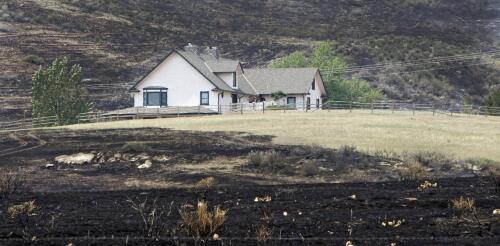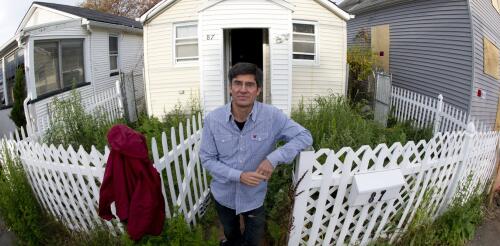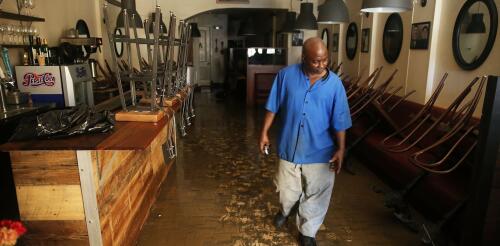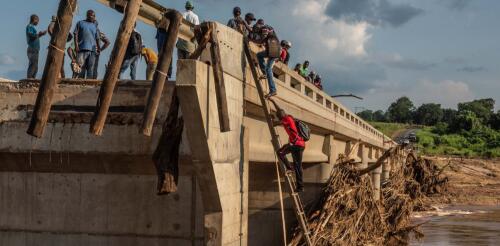Disaster risk
Extreme heat has already made 2024 a busy wildfire year. More acres had burned by mid-July than in all of 2023, and several communities had lost homes to wildfires. As fire season intensifies across the West, there are steps homeowners can take to make their homes less vulnerable to burning and increase the likelihood that firefighters can protect their property in the event of a wildfire. We research wildfire risk to homes and communities. Here’s what decades of research suggest homeowners in high-fire-risk areas can do to protect their properties. This house near Cle Elum, Wash., survived a 2012 wildfire because of the defensible space around the structure, including a lack of trees and brush close to the house, according to state officials. AP Photo/Elaine Thompson Small improvements make big differences A structure’s flammability depends on both the materials that were used to build...
Leer en español. Southeast Michigan seemed like the perfect “climate haven.” “My family has owned my home since the ‘60s. … Even when my dad was a kid and lived there, no floods, no floods, no floods, no floods. Until [2021],” one southeast Michigan resident told us. That June, a storm dumped more than 6 inches of rain on the region, overloading stormwater systems and flooding homes. That sense of living through unexpected and unprecedented disasters resonates with more Americans each year, we have found in our research into the past, present and future of risk and resilience. An analysis of federal disaster declarations for weather-related events puts more data behind the fears – the average number of disaster declarations has skyrocketed since 2000 to nearly twice that of the preceding 20-year period. A powerful storm system in 2023 flooded communities across Vermont and left large par...
After Hurricane Ida hit New Orleans in 2021, Kirt Talamo, a fourth-generation Louisianan, decided it was time to go. He sold his flooded home, purchased his grandmother’s former house on New Orleans’ west bank, which hadn’t flooded, and moved in. It felt good to be back within its familiar walls, but his mind was on the future. “My other house wasn’t supposed to flood, and now insurance costs are going through the roof; it’s bad,” he told us. “I wanted to keep my grandma’s place in the family, but I don’t know how much longer I can stay. I’d love to, but it’s unsustainable.” When hurricanes and other disaster strike, they often trigger presidential disaster declarations, opening the way for large sums of taxpayer money to flow to affected communities. Some of that money will go immediately to help people in need. Some will go to rebuild public infrastructure, like roads and levees. And some of it will...
How a community recovers after a disaster like Hurricane Ian is often a “chicken and egg” question: Which returns first – businesses or households? Businesses need employees and customers to be able to function. Households need jobs and the services businesses provide. As an urban planning researcher who focuses on housing recovery after disasters, I have found in my research that they’re mutually dependent. However, in coastal communities, the recovery of tourism-based businesses like restaurants and hotels depends in large part on the return of affordable housing for employees. Rockport, Texas, where Hurricane Harvey made landfall in 2017, is an example of the challenge. It’s a small community that caters to vacationers and sport fishermen, including celebrities like country singer George Strait, who filmed an ad campaign in 2018 urging tourists to return to Rockport. Drawing tourists isn’t easy without fully functioning restaurants and hot...
These days, it’s hard to escape news stories discussing how climate change is contributing to extreme weather disasters, including the recent U.S. hurricanes. Aid agencies are increasingly worried about the widespread damage. A growing question as these disasters worsen in a warming world is how to pay for recoveries, particularly in poorer countries that have contributed the least to climate change. I am a climate scientist who researches disasters, and I work with disaster managers on solutions to deal with the increasing risk of extreme events. The usual sources of disaster aid funding haven’t come close to meeting the need in hard-hit countries in recent years. So, groups are developing new ways to meet the need more effectively. In some cases, they are getting aid to countries before the damage occurs. Disaster aid funds aren’t meeting growing need Countries have a few ways that they typically send money and aid to other countries that need help when dis...




